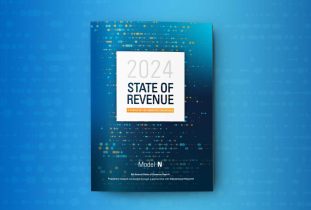By Judy Hanover Sr. , Director, Life Sciences Product Marketing, Model N
Executing on revenue strategy is rarely simple, and for medical technology (medtech) manufacturers, this rings especially true. Dealing with high data volumes, increasing competition, changing regulatory requirements, and a contracting and pricing ecosystem that gets more complex by the day, medtech manufacturers have a lot to juggle. As a result, many medtech manufacturers continue to struggle to execute revenue efficiently without leakage. However, the pressure to grow net revenue has never been higher.
At Model N, we’ve found that revenue leakage can come from many sources, from overpaying chargebacks, rebates, and discounts to simply getting the price wrong amidst pricing complexities. As a result, medtech companies are losing millions of dollars to revenue leakage. and lack of visibility into the revenue process is making it almost impossible for manufacturers to see where revenue leakage is occurring and stop it from happening without the right tools and processes.
To help medtech companies gain control of their revenue management process, we’ve developed six steps that will guide them through the process of successful revenue execution. They are:
- Diagnose. Get started with an environmental scan of the entire revenue process to identify areas of inefficiencies or inaccuracies and diagnose the problem. Key areas to examine include places where siloed teams are not working from a single source of truth in data, where manual processes have the potential to lead to human error and inefficiencies, and where you or your team suspect overpayments or inaccurate payments may be common. Categorize potential interventions to identify the quick hits that can be attacked first to create immediate value and stem the flow of revenue leakage, and places where long-term strategies are needed to remedy the hard-to-fix leaks and operational inefficiencies.
-
Prepare. Identify the resources and tools needed to address key issues and keep your team efficient. Invest in process automation capabilities that allow you to stretch resources further and improve results, while improving processes long term.
-
Get precise with your operating plan. Don’t just wing this one or make the mistake of thinking a broad plan is good enough. Automated validation of contract compliance can add precision and improve results, while allowing your team to innovate when developing new contracts types and models. The more defined your processes and tools are, the better your system will operate as a whole.
-
Stop the bleeders. Once the quick hits are identified, move quickly to put fixes in place. Administrative costs and penalties can further impact profitability so taking steps quickly to identify and remedy the largest issues can pay off big.
-
Manage your operating team. Leverage real time visibility and partners where needed to make sure you are addressing urgent issues as well as putting a workflow in place that allows for continuous process improvement. This is not a one-time project; the complexity of contracts will continue to grow and your team will require a revenue management platform that can grow and scale alongside your product portfolio.
-
Monitor. Establish the right metrics and monitor key performance indicators to make sure your results lead to revenue processes that continue to operate at their highest potential over time. Repeat the process as needed, identifying further opportunities in subsequent cycles and setting the stage for continuous improvement as you fine tune your revenue execution engine.
The stakes are high for medtech manufacturers and the challenges abound. However, if manufacturers follow these steps now and begin the process of identifying problem areas, developing and executing a plan to stop revenue leakage before it occurs, and consistently monitor these transactions, they are sure to improve overall revenue. To find out more about the process and how Model N can help, read The Six Step Operating Guide to Revenue Execution, which can be found here
















